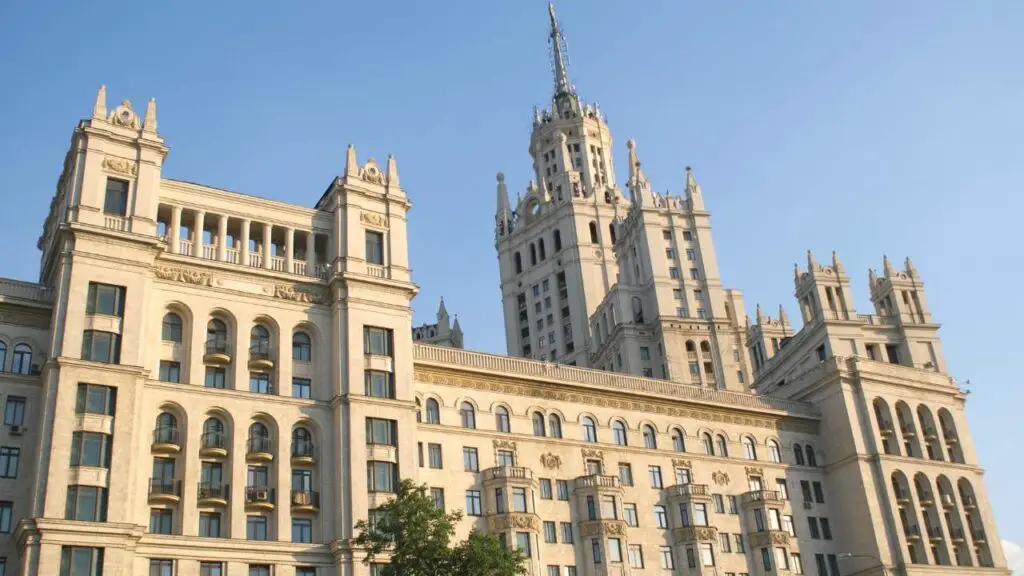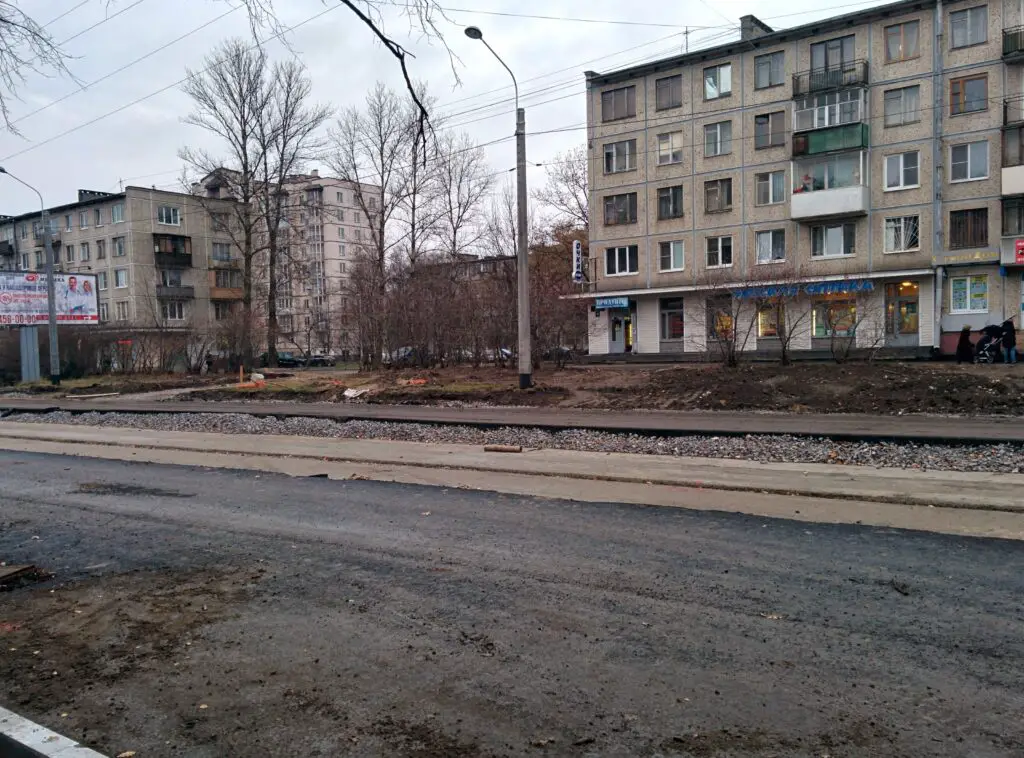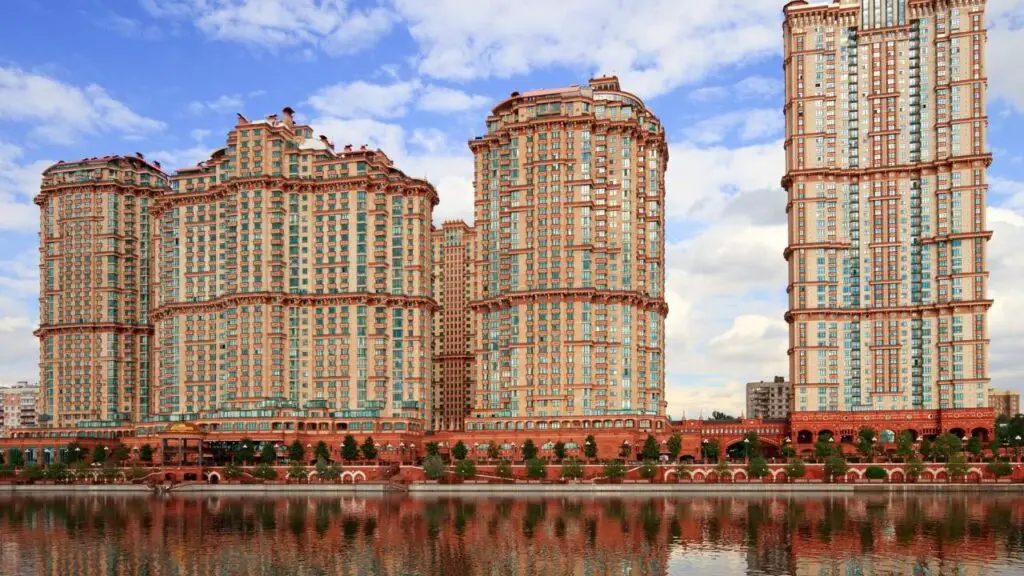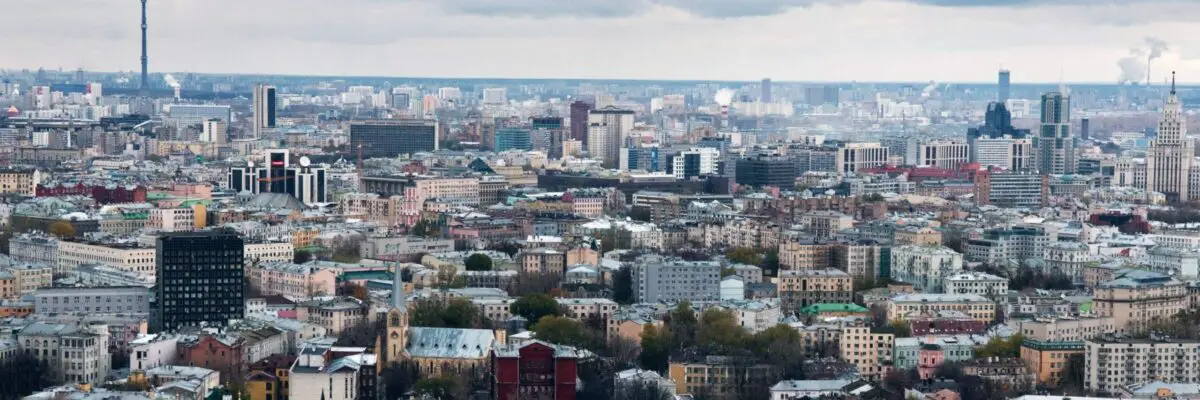Contents
Russian apartments are infamous in the West for their bland appearance, but it may surprise you that most people live in apartments rather than houses in an enormous country like Russia. Compared to just 14% of Brits and less than 20% of Americans, two-thirds of Russians live in apartments.
There is a massive variety of apartments on the market, from former palatial residences of imperial aristocrats to shoebox apartments that were the savior of Soviet families. We’ll tell the story of Russian apartments through history, explain the different types, and consider the pros and cons of living in each.
Pre-revolutionary Apartments
These apartments are from before the 1917 Bolshevik revolution. In Imperial Russia, the urban population lived almost exclusively in apartment blocks, and merchants and businessmen typically built these as one-off projects. Some blocks are plain and humble, others elaborately adorned with colored stone and sculptures and channeling the latest architectural trends. Today, pre-revolutionary Russian apartments are some of the most sought-after accommodations.
Pros of Living in a Pre-revolutionary Apartment
Pre-revolutionary Russian apartments are usually in the heart of the city, just a stone’s throw from transport links, shops, and entertainment. So you’re immersed in the historical center of Russia the minute you step out of your front door.

Some residential blocks boast striking architectural details inside and out: original features include sweeping entrance staircases, elaborately-decorated façades, ceramic stoves, and intricate parquet flooring. They typically have high ceilings, large windows, and multiple spacious rooms. Some rooms are so large that they have even turned into two-level studio apartments.
A single pre-revolutionary house offers many living options – from a grand duplex with five bedrooms overlooking the historical street to a 1-bed attic apartment overlooking the internal courtyard. So you can live in the city center on practically any budget.
Cons of Living in a Pre-revolutionary Apartment
Not all pre-revolutionary blocks are beautiful architectural monuments. Some desperately need renovation, with crumbling facades, dirty courtyards, rusty water pipes, and old electrical wiring dating back over half a century.
Others still have renovations from the Soviet period, when the common practice was to turn spacious pre-revolutionary apartments into smaller living spaces to accommodate more families. You might come across oddly sized rooms, plasterboard walls, dingy corridors, bathrooms, and kitchens.
Stalinka
In the first years of the Soviet period, people flocked to the cities at an astoundingly high rate. At the same time, they did away with private ownership and personal space as it was considered anti-soviet.
The government allocated 9 square meters of living space to each person. They also turned private housing into communal apartments (called kommunalki), where one family had one room, and everyone shared the kitchen and bathroom.
Building Russian pre-revolutionary apartments weren’t sufficient to house the massive influx of people to the cities during the early Soviet years.

Apartment blocks built during Stalin’s reign, from the 1930s to 1950s, are known as “stalinka.” Some apartments were communal and for ordinary people. In contrast, others contained individual homes for the nomenklatura (political, cultural, and scientific elite), and these Russian apartments were – and still are – prestigious and desirable.
Pros of living in a Stalinka
Stalinka apartments were built in the Stalinist Empire style – an imposing combination of Russian Baroque, Art Deco, and Neo-Gothic architecture. The soviet government constructed the most elaborate houses before the outbreak of the Second World War. Unlike pre-revolutionary apartments, you’ll find high ceilings, large windows, large rooms, thick brick walls, and balconies in most homes.
Stalinka apartments are the most centrally located of all Russian apartment blocks, and they line some of Russia’s grandest avenues and squares (especially in Moscow). They were built in carefully-planned small districts, with greenery, open spaces between each house, and everything you need nearby.
The government built some stalinka apartments for the party elite, some for ordinary people – either way, they are renowned for their quality. They made them long-lasting using the latest engineering, technology, and superior materials. Unlike pre-revolutionary streets, stalinka communities have ample space for car parking.
Cons of Living in a Stalinka
Stalinka apartments have old pipes and wiring that are expensive to repair and maintain.
Khrushchevka

While the Soviet elite lived well, most people did not. Communal apartments neglected their basic need for privacy and space, and there was a severe housing shortage after wartime destruction. Nikita Khrushchev began mass production of prefabricated apartment blocks to mitigate the housing crisis. They were known as khrushchevka apartments and were built from the mid-1950s onwards. Thirteen thousand identical khrushchevka were rolled out everywhere, from the suburbs of Moscow to the villages of the Far East. For the first time, ordinary Soviet families could have apartments to themselves.
Pros of Living in a Khrushchevka
Pre-revolutionary architecture considered balconies disruptive to the beauty of a building’s façade, so they didn’t include them. Since khrushchevka apartments weren’t designed with aesthetics in mind, every apartment had the luxury of a balcony – some are open, and some are covered and used as storage space.
Like stalinka apartments, the Soviet government developed khrushchevka apartments as part of self-contained micro districts. You’ll find green areas, playgrounds, schools, shops, doctors’ offices, transport infrastructure, and more in the neighborhood.
Cons of Living in a Khrushchevka
Khrushchev openly condemned the excessive grandeur of architecture under Stalin, and Russia needed quantity rather than quality. As a result, the khrushchevka turned out as drab, grey blocks that are an iconic part of post-soviet skylines.
These Russian apartments are cheap but small, with low ceilings, thin walls, one-bedroom, and tiny kitchens. Most buildings have five floors, the maximum number permitted by law without an elevator. Since khrushchevka apartments were budget accommodation, residents got 9 square meters of living space and no more.
Most khrushchevka apartments were built in less than two weeks and only intended to last 25 years. However, the majority still stand and aren’t always in the best shape.
Brezhnevka
Khrushchevka gave Soviet citizens their first taste of private life, but they lacked in many ways. The next apartment block stage came under Leonid Brezhnev in the 1970s and 1980s. Known as brezhnevka apartments, they were an improved version of single-family apartments.
Pros of Living in a Brezhnevka
Where khrushchevka were just a cut-and-paste solution to the housing problem, architects of brezhnevka had a little more freedom. The houses range from 8 – 17 floors tall and are part of enormous architectural ensembles and even experimental projects, like the Round Houses in Moscow.

Brezhnevka apartments have more spacious rooms, better layouts, and use longer-lasting materials. Instead of cramming the whole family into a tiny khrushchevka, a three- or four-room brezhnevka can comfortably accommodate everyone. They also have elevators, making life much easier for elderly residents and parents with young children. Like other Soviet districts, brezhnevka apartments have shops, green spaces, and transport links nearby.
Cons of Living in a Brezhnevka
Although brezhnevka apartments are slightly better quality than their predecessors, the no-frills aesthetic remains the same. Most are constructed from prefabricated concrete panels and often look quite run-down, even if the district is well-kept.
Post-Soviet Russian Apartments
Today, more and more people are flocking to live in major cities all over Russia. Modern Russian apartments are popping up everywhere to accommodate. There are four building classifications: economy, comfort, business, and elite.
“Economy” class are the cheapest new Russian apartments – essentially the modern version of khrushchevka apartments. If you’ve visited Russia in the last decade, you may have noticed endless high-rise complexes of economy apartments on the edges of cities.
Most units in these buildings are small, cheaply-built studios and one-room apartments bought by people who want to own a home. They are very far from the center and, unlike the self-contained Soviet micro districts, have no infrastructure. Often, highways and more apartments surround them. In keeping with tradition, economy apartments have earned their president-based moniker – putinka.
At the other end of the spectrum are “elite” class apartments. These are the most expensive Russian apartments and more expensive than even the most luxurious pre-revolutionary residences. They offer the best of both worlds: designed by top architects and interior designers and located in gated compounds close to the city center. They boast the modern renovations and facilities that pre-revolutionary housing lacks, such as spas, gyms, and underground parking.

As you can see, expats moving to Russian cities have numerous housing options. Whether you’re a student looking for a cheap studio or an executive searching for a Russian palace, there’s a Russian apartment for everyone.
If you want to learn more about what life is like in Russia, check out our article Living in Russia: 17 Things to Know Before Moving.

